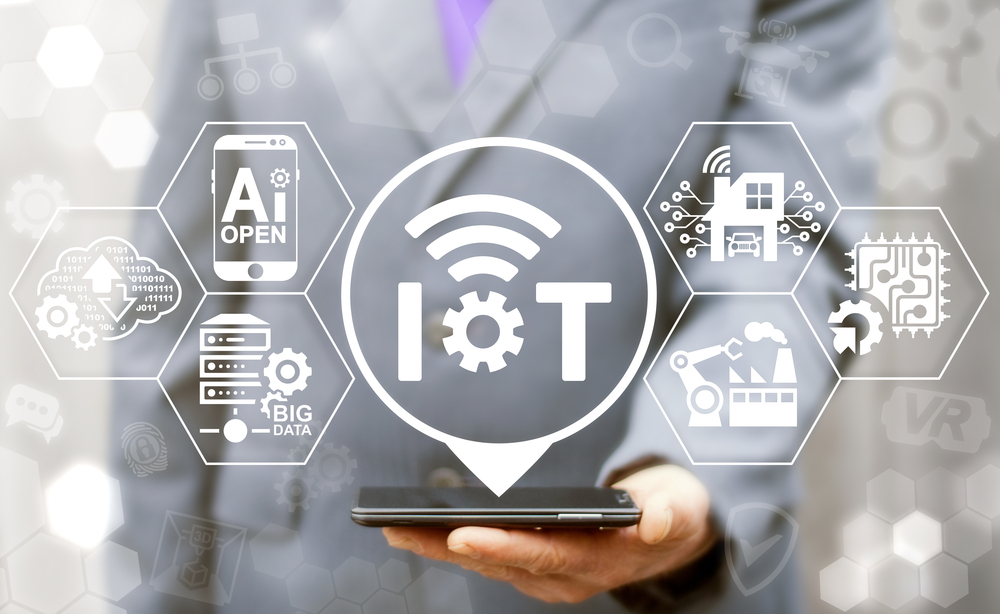IoT is All Around – Including Our Workplace
Narender Yadav /
September 10, 2018
The growth of IoT across sectors is unimaginable. According to a report, by 2025 the global worth of IoT tech is projected to reach whopping $6.2 trillion! IoT is already making an impact across so many industries – such as retail (in the form of beacons), manufacturing (RFID tags), healthcare (smart wearables), home (intelligent thermostats), agriculture (smart farming) and more.
That said, it’s also true that there is an inadequate appreciation of just how far IoT has penetrated. To remedy that, in this blog, we will look at the ongoing impact of IoT on our immediate surrounds -our workplace!
According to a report, by 2023 the size of the smart office market is forecast to reach $46.11 billion. Here are 10 examples of IoT in the workplace:
- Security systems: IoT-driven security cameras, smart locks, and sensors are among the most popular use cases for IoT in the workplace. From access control to visitor management, these smart systems eliminate outdated access control systems and replace physical badges with digital ones. Networked cameras can send streaming video straight to mobile devices, allowing security staff to see who’s approaching and leaving the office premise or other high-security spaces, like the server room.
- Building automation: Although building automation systems have been around for a while, enabling organizations to control heating, ventilation, air conditioning, lighting and other systems, IoT is making these systems more intelligent. Now, a heating system can automatically modify the office temperature according to the weather outside – optimizing energy usage while ensuring employees are more comfortable.
- Energy management: The smart grid concept is picking up steam in the workplace. By collecting data in an automated fashion and analyzing usage, IoT is enabling organizations to improve energy efficiency. Today’s smart power grids are not only smart but also extremely reliable. They can help tweak light intensity as well as cut back on waste; as soon as the last person leaves the room, the lights can automatically turn off.
- Climate control: Smart thermostats that leverage geofencing features to analyze an office’s location can automatically control air-conditioning or heating and schedule changes according to the business hours. They adapt to the ambient weather and create the optimal office temperature that makes everyone feel comfortable. The Nest thermostat, for instance, programs itself according to the location and weather, learns what temperature is most optimum and builds a schedule accordingly.
- Scheduling systems: IoT is also bringing in smart scheduling systems that present a wide variety of opportunities to simplify a number of tasks, including IoT-enabled conference rooms and room occupancy management. These systems can make working a lot easier by solving space management challenges. Employees can create an interactive map of the office to book spaces right off the floor plan as well as book conference and meeting rooms based on the required amenities, location, and size.
- Smart desks: In a world where stress, long hours and uncomfortable seats are causing several health concerns, IoT-driven smart desks can warn if employees have been sitting or standing too long. By gathering important data about daily work life, they can encourage employees to improve your habits. They can also learn about individual preferences, adjust to their needs and enable employees to become even more productive at work.
- Digital assistants: Digital assistants are creating a buzz in the workplace. By incorporating IoT and machine learning technology, these digital assistants can make calls, check calendars, and access data on business applications as well as get information on the location of the nearest free meeting room. Amazon’s Alexa for Business allows companies to use the Alexa digital assistant in an office setting to automatically inform staff about meetings, mine the dial-in information, dial into the conference provider, and start the meeting. They can also automatically lower the projector screen, dim lights, and turn off all devices once the meeting is over.
- Smart vending machines: In the course of a hectic workday, coffee breaks are much-needed and enjoyed by every employee. IoT-led smart vending machines monitor the working of the machine and make sure the machine never runs out of coffee beans. These machines can also adjust the taste of coffee according to personal preference of employees; staff can check the temperature of the milk or water as well as control the amount of coffee and sugar to offer a cup which meets their taste.
- Predictive maintenance: IoT continuously collects data from sensors and enables staff to drive predictive and preventative maintenance activities. By gleaning trends from the collected data, they can identify when something is likely to go wrong – say the server cooling system – and then dispatch the maintenance team to repair it before it becomes a critical failure.
- Fluid design: With IoT, organizations can finally bid adieu to traditional cubicle designs and make office designs and floor plans more modern. Today’s smart offices feature flexible workspaces that can be used for various purposes throughout the day. Driven by IoT, modern office design provides a unified smart building and office experience, enabling greater waste reduction and higher efficiency and productivity – all while delivering a more satisfying workplace experience to the people inside.
Improving Productivity
The introduction of the IoT into the office has made processes more efficient and employees more productive. Security breaches will never go unnoticed, air-conditioners will never run overtime, employees will never sit or stand for too long, critical office equipment will never stop operating, booking a conference room will never be a challenge and coffee machines will never run dry.
Having an IoT-enabled smart office undoubtedly is a lot more than automated temperature or lighting; it means safer, more efficient operations, and a more motivated and happy workforce.
Now, look around yourself. If the office you work in can be some much under the spell of IoT, isn’t it time to accept that the rest of the world may be similarly in IoT’s grip?





